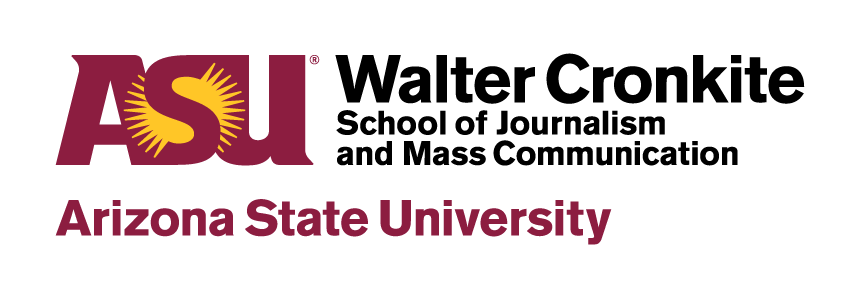Arizona State University journalism graduate student Jordan Gerard describes the challenges of interpreting a candidate debate, which can be a sort of verbal ping-pong match between political opponents, filled with emotion and nuance. But without such services, millions of people who have hearing disabilities would be disenfranchised. Read more
deaf
DeafBlind Communities May Be Creating a New Language of Touch
Protactile began as a movement for autonomy and a system of tactile communication. Now, some linguists argue, it is becoming a language of its own. Read more here.
COVID-19 is creating communication barriers for the deaf community
For many people who are deaf or hard of hearing, lip reading, facial expressions and body language are vital to communication, but protective face masks and remote work and school meant to slow the spread of COVID-19 have made it more difficult.
More than 1.1 million people in Arizona are hard of hearing, and more than 20,000 are deaf, according to the Arizona Commission for the Deaf and Hard of Hearing.
‘The Silent Child’ about deaf girl wins 2018 Oscar for Best Short Film
A short film about a 4-year-old deaf girl called “The Silent Child” won the 2018 Academy Award for Best Short Film (Live Action). The film’s title character is played by Maisie Sly who is deaf in real life. The film was written by UK actress Rachel Shenton and directed by her fiancé Chris Overton. During the awards ceremony Shenton used American Sign Language to translate her acceptance speech, which doubled as a passionate description of communication challenges faced by children with disabilities.
“Our movie is about a deaf child being born into a world of silence,” said Shenton. “It’s not exaggerated or sensationalized for the movie. This is happening, millions of children all over the world live in silence and face communication barriers, and particularly access to education. Deafness is a silent disability. You can’t see it and it’s not life-threatening, so I want to say the biggest of ‘Thank yous’ to the Academy for allowing us to put this in front of a mainstream audience. ”
CLICK HERE to watch the trailer for “The Silent Child”. CLICK BELOW to watch Shenton and Overton’s acceptance speech.
https://www.youtube.com/watch?time_continue=2&v=8BbjIrt_VcQ
Creators of ‘This Close’ dramedy on SundanceNow wanted show by and about deaf characters
SundanceNow is streaming a new show by and about deaf people called “This Close.” The New York Times interviewed the show’s creators, Shoshannah Stern and Josh Feldman. The article gives a behind-the-scenes description of developing and producing the show.
Detour Company Theater offers performing arts to actors with disabilities
A community theater group in Phoenix called Detour Company Theater features actors with disabilities performing blockbuster broadway musicals. Arizona State University student Allison Bailey profiled the theatre troupe and its founder for a story on Cronkite News.
Mixed reactions to music after receiving cochlear implant
Every week The New York Times features an opinion column written by a person with a disability. This week’s essay by Rachel Kolb describes her mixed reactions to music after receiving a cochlear implant. Kolb’s column also includes a virtual reality video and animations to illustrate her sensations of seeing music and feeling vibrations. Click here to enjoy the full column.
Upcoming Hollywood films about disability attract criticism for lack of authenticity
Several recent films produced by Hollywood studios and starring celebrity actors are frustrating disability advocates for their lack of diversity and authenticity. Examples include Todd Haynes’s film Wonderstruck starring Julianne Moore as a deaf woman, David Gordon Green’s Stronger starring Jake Gyllenhaal as a double-amputee, and Andy Serkis’s Breathe starring Andrew Garfield as a polio patient who becomes a quadriplegic. A recent article in USA Today explains why disability advocates are raising awareness about the lack of casting diversity and how filmmakers are responding.
Article excerpt: So what can Hollywood do to give more visibility? Lauren Appelbaum, communications director for RespectAbility, a non-profit organization working to fight stigmas and create opportunities for people with disabilities, urges studios to look to TV, where actors such as Stranger Things‘ Gaten Matarazzo (who has cleidocranial dysplasia, a rare growth disorder) and NCIS: New Orleans‘ Daryl Mitchell (who is paralyzed from the chest down) play roles that don’t hinge on them being disabled.
“Actors with disabilities could easily play roles that neither hide nor emphasize their disability,” Appelbaum says. “For example: a doctor who uses a wheelchair or a scientist with cerebral palsy. By including characters with obvious and hidden disabilities in scripts and story lines, films can create more authenticity within entertainment.”
AZ Commissioner for Deaf and Hard of Hearing gives advice to employers
Today, October 31st, is the last day of National Disability Employment Awareness Month. The goal of NDEAM is to promote resources for employees with disabilities and their employers. Ted Simmons of Arizona PBS recently interviewed Pv Jantz about resources offered by the Arizona Commission of the Deaf and the Hard of Hearing. Jantz, who is deaf, says employers shouldn’t assume what type of accommodation a new co-worker needs. The best approach is to ask the employee what they prefer as an individual. Workers with disabilities tend to be experts on which accommodations best fit their individual needs. Jantz also recommends the website www.AskJAN.org (the Job Accommodation Network) as a resource for employers and employees with disabilities.
Chance the Rapper interprets his “Blessings” song into ASL
The hip-hop community wants to make their products accessible to the Deaf community. Superstar singer and songwriter Chance the Rapper partnered with DEAFinitely Dope’s Matt Maxey and Kelly Kurdi to interpret the first verse of Chance’s song “Blessings” into American Sign Language. Learn more about their partnership by reading this Billboard Magazine article, and by watching the full video here on Pigeon and Planes‘ YouTube channel.

